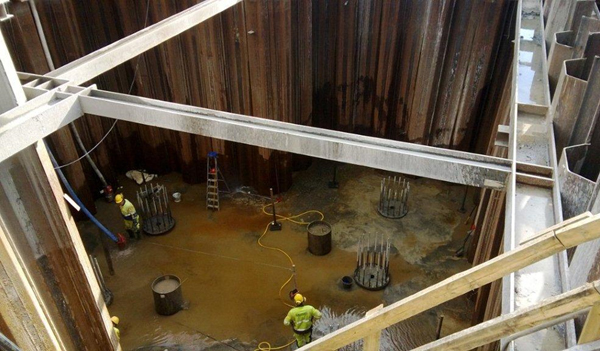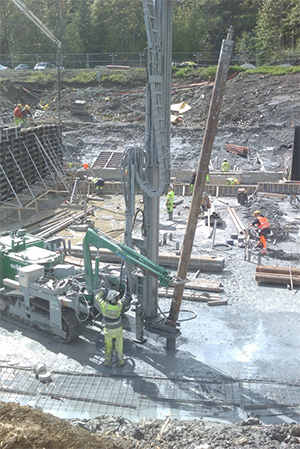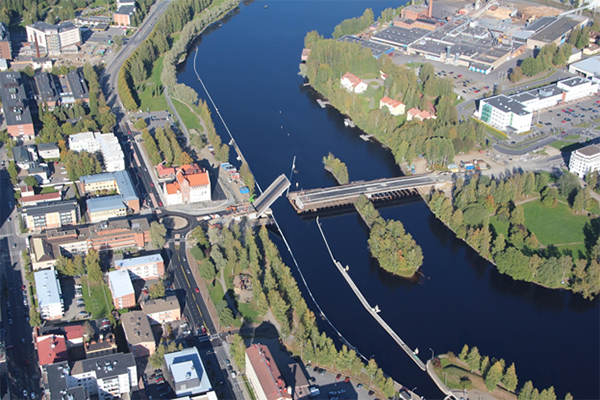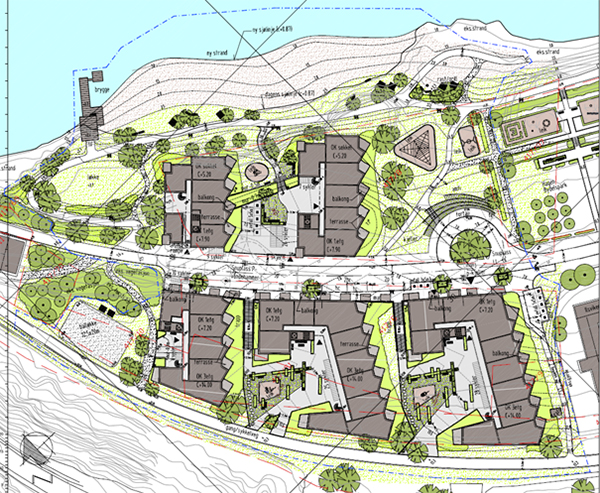Co-operation with geotechnical engineering professionals - Case Ramboll
Major building projects are focusing to expanding cities, which often means demanding subsoil conditions like marine fills and construction works in proximity of existing buildings. Steel piles are often very competitive in such conditions. SSAB’s tubular steel piles are widely used in Finland in both infrastructure and building projects. The piles are almost invariably end bearing piles, driven to dense moraine or drilled to bedrock. Steel piles with the highest steel grade (S550) are economical in fills, where strength properties of the soil deposit allows us to exploit the whole structural capacity of the pile. We have also successfully used drilled piles to take both compression and tension forces by installing anchors inside a drilled pile.
For pile design our team uses RRPileCalc design software on a regular basis. It offers an easy manner to account the Eurocodes and different design approaches for wide category of pile products and variations. Most recent versions of the program also offer tools for more advanced analyses accounting detailed stratigraphy and lateral deformations.
An important part of SSAB’s pile concept is a technical support which they are capable and willing to offer for designers and constructors. They have their own geotechnical and structural specialists who can help to solve their clients’ needs. SSAB is also active player in geotechnical R&D. They are eager to get feedback or new ideas and they are constantly and actively developing their products.
Sirkkala bridge, Finland
Sirkkala bridge is a new bascule bridge, which locates in very heart of Joensuu city crossing a Pielisjoki river. Construction of the abutments was a demanding task, water depth was 7 m and the current is heavy. The abutments were founded by using large diameter drilled steel piles. The main abutment which holds the bascule with the counterweight had a very strict tolerances for any movements to ensure the functionality of the mechanism. The demands were fulfilled by using RD1000 mm drilled piles. The piles were installed 3 m into the bedrock and the small cap between the bedrock and the pile skin was grouted after the installation to minimize the horizontal movements. The abutment is also designed to stand accidental impact load of a vessel which will cause remarkable tension forces in the piles. To account these tension forces, heavy bar anchors were drilled and grouted to bedrock through the drilled piles. This design solution was found to be effective and more riskless to execute when comparing to a traditional gravity foundation.
Sirkkala bridge locates in very heart of Joensuu city crossing a Pielisjoki river.

The abutments were founded by using large diameter drilled steel piles. The bottom of the excavation in picture is about 7 m below water table.
Ilsvika Extra project in Trondheim, Norway
The housing project “Ilsvika Extra” in Trondheim was completed in 2012. The area is shown in the drawing, figure 3, including about 140 housing units. Ramboll did the geotechnical design. The major part of the area is located within registered Hazard Zone of Quick Clay no. 180: ”Ilsvika” in Trondheim municipality, that in 2002 was mapped by Norwegian Water Resources and Energy Directorate (NVE) and Norwegian Geotechnical Institute (NGI). The mapping resulted in the area being classified to fall within risk class: 5. The extent of the quick clay was then mapped in detail by supplementary soil investigations. The conclusion from assessing the stability of the area was that no additional loading could be allowed. For the buildings this was solved by choosing piled foundations to bedrock, while a combination of light weight fill material and piled foundations was used for the shoreline. Depth to bedrock is on average less than 20 m. In early phase of planning and design, driven HP piles were considered as a solution to prevent soil displacement and increase of porepressure. In later, more detailed design phase this was changed to drilling of SSAB’s RD micropiles with ringbits and careful flushing with water.
Plan view of the project
Because the RD-piles can be installed by a relatively small drill rig, the installation/piling was done at the same time as other construction works were done. Consequently the contractor made good progress. Drilling in soft clay also causes very little noise. The piling contractor was very competent to drill carefully and there was no erosion registered around the piles. After installation the piles were concreted to prevent inside corrosion, while the outside is designed for a given corrosion loss during life time according to the design guidelines. Piles installed were RD140/8, RD140/10, RD170/10 and RD220/10 in 6 m long elements with threaded sleeves for fast installation, adding up to a few thousand meters total.

Authors:

Juho Mansikkamäki
Dr.Sc., Geotechnics
Project Manager
Ramboll Finland Ltd

Even Øiseth
Senior Technical Manager
Rambøll Norge AS
Attachments
Category and tags


